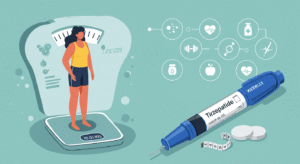Debunking Common Misconceptions About Hormone Therapy
Hormone therapy, a subject often entangled in controversy and confusion, has been the topic of much debate and misinformation. To navigate the complexities of this treatment, it’s crucial to dismantle the myths and present a clearer picture based on scientific evidence and clinical practice. Here, we address and debunk common misconceptions about hormone therapy, illuminating the facts behind the fallacies.
Misconception 1: Hormone Therapy is Only for Menopause While hormone therapy is well-known for its application in relieving menopausal symptoms in women, its scope extends far beyond. It’s also employed to address conditions such as hypogonadism in men, thyroid disorders, adrenal insufficiency, and to support individuals undergoing gender transition.
Misconception 2: Hormone Therapy Causes Cancer One of the most pervasive fears surrounding hormone therapy is its association with cancer. It is essential to understand that hormone therapy’s relationship with cancer risk is complex and varies according to the type of hormone, dosage, duration of treatment, and individual patient factors. For instance, certain forms of hormone replacement therapy (HRT) have been linked to a slightly increased risk of certain types of cancer, but this risk is often contextual. When prescribed and monitored carefully, the benefits of hormone therapy can outweigh the potential risks for many individuals.
Misconception 3: Hormone Therapy is Unnatural The term “hormone therapy” can conjure images of synthetic interventions. However, bioidentical hormone therapy uses compounds identical on a molecular level to the endogenous hormones produced by the body. This therapy aims to mimic the body’s natural hormonal rhythms, often resulting in fewer side effects compared to synthetic counterparts.
Misconception 4: Hormone Therapy is Only for Older Adults Another common myth is that hormone therapy is exclusively for the elderly. While it’s true that hormonal imbalances more frequently occur as we age, younger individuals can also experience conditions that necessitate hormone therapy. Endocrine disorders, certain medical treatments, or injuries can lead to hormonal deficiencies or imbalances that require intervention, regardless of age.
Misconception 5: Hormone Therapy Results are Immediate Many expect rapid results from hormone therapy. The reality is that the effects of hormone therapy can be gradual and vary from person to person. It often requires careful monitoring and adjustment by a healthcare professional to achieve the desired outcome, and patience is key to finding the right balance.
Misconception 6: Hormone Therapy is Only About Pills or Injections Hormone therapy can be administered in various forms, not just pills or injections. Patches, gels, creams, and even pellets inserted under the skin are all valid methods of delivery, with different pros and cons. The method of administration is tailored to the individual’s needs, preferences, and the specific hormone being replaced.
Misconception 7: Once You Start Hormone Therapy, You Can’t Stop Some believe that once hormone therapy is initiated, it must be continued indefinitely. In reality, hormone therapy can be stopped, but it should be done under medical supervision. A healthcare provider can guide the tapering off process to avoid withdrawal symptoms and manage the recurrence of symptoms.
In debunking these misconceptions, we shed light on the nuanced reality of hormone therapy. It’s a complex field of medicine that requires an individualized approach and ongoing assessment. Those considering hormone therapy should engage with healthcare professionals to weigh the benefits and risks and to make informed decisions based on their unique health situations. The overarching narrative surrounding hormone therapy should not be dominated by myths but informed by evidence, personalization, and a commitment to patient well-being.


